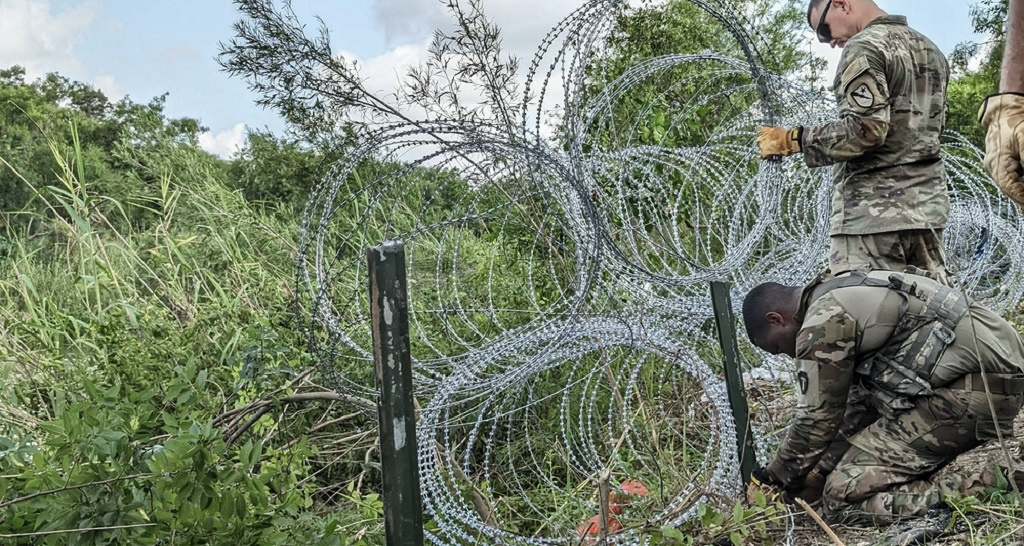The lawsuit came three weeks after the barrier’s installation began and two weeks after Mexico filed a diplomatic complaint claiming that the barrier infringes on two international treaties.
In early July, Texas officials began to place a floating barrier in the Rio Grande near Eagle Pass, Texas with the stated purpose of preventing people from getting to the U.S. border. The 1,000-foot system, which is the first of three, is constructed so that people can’t climb over or swim under.
The DOJ’s lawsuit claims that Texas is violating federal law because it failed to obtain authorization from the U.S. Army Corps of Engineers before placing the barrier. Section 10 of the Rivers and Harbors Act prohibits “any obstruction . . . to the navigable capacity of any of the waters of the Unites States” without prior approval from that federal agency. The DOJ requests that Texas remove the barrier at its own expense and refrain from placing any additional barriers.
Texas Governor Greg Abbott, who has been itching for another showdown in the courts with President Biden over immigration policy, welcomed the lawsuit. Publicly, Governor Abbott claims that Texas has the “sovereign authority” to protect its borders.
For the past two years, Governor Abbott has implemented the harsh and costly Operation Lone Star program. He says the program’s purpose is to deter migrants from entering the state and prevent the flow of drugs. Last year, an in-depth investigation found that the program’s ever-shifting metrics contradicted claims of its effectiveness. It’s also faced several allegations of civil rights violations.
A trooper-medic from the Texas Department of Public Safety—one of the agencies tasked with enforcing Operation Lone Star—recently alleged that troopers were told to push children back into the river and to withhold water from heat-stricken people. Even Border Patrol agents are complaining that the concertina wire, which Texas has placed along the banks of the Rio Grande for the past year, is preventing them from doing their job. And the state has lost several lawsuits, ranging from equal protection violations when officials only arrested migrant men to unlawfully detaining men without filing any charges.
Governor Abbott’s recent actions aren’t the first that have resulted in diplomatic headaches with Mexico either. In May, Mexico threatened to file a complaint under the United States-Mexico-Canada free trade agreement after Texas re-started commercial vehicle inspections at the border, which could result in millions of dollars in losses. Last year, similar inspections cost an estimated $9 billion. Mexico also proposed to shift the construction of a billion-dollar trade railway connection from Texas to neighboring New Mexico given Texas’ use of trade as a “political tool.”
While Abbott engages in acts of performative cruelty and self-inflicted trade wounds, others in the state are working to find commonsense solutions that are humane and economically beneficial.
Texans for Economic Growth, a coalition of more than 145 businesses and chambers of commerce in the state, calls for a more rational and collaborative approach to immigration policy that is reflective of the economic and workforce needs of the state. This makes sense as Mexico is Texas’ top trading partner and cross-border trade between the two is more than $230 billion annually.
The DOJ chose a narrow lawsuit despite Texas’ many dangerous and harmful border policies. This may be because President Biden is wary of creating a harmful precedent under the conservative Supreme Court—where such a case will end up. Yet, Governor Abbott’s interest in pushing the bounds of his state’s border policy means it’s just a matter of time until the president is forced to take on more than just the buoys.
FILED UNDER: Texas


